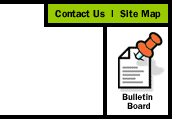
 |
 |
|
 |
 |
Recommendations
1. Create Steering Committee and Action Teams
Create a UC2010 Steering Committee, chaired by the Senior Vice-President, Business and Finance, to oversee the implementation of recommendations outlined in this report. The Steering Committee will:
- Coordinate new and existing committees to pursue recommended strategies
- Establish timeframes and deliverables from implementation teams
- Provide communications within UC and external constituents
- Publish progress reports on the UC2010 Web site
- Solicit input and suggestions from business officers and other stakeholders
- Coordinate resource requirements and monitor budgets for initiatives
- Provide sponsorship, guidance, decision-making, and support of implementation activities
2. Refine the New Business Architecture Strategies Included in this Report
Following is a summary of the New Business Architecture strategies presented at the end of each report section. The Web-version of this document will facilitate the regular update, over time, of the above action plans to address the full range of strategies listed below. A rolling horizon of two to three years will serve to identify priorities, focus resources, and clarify the next courses to action that will be required.
- Develop a portal model that migrates from static Web pages to a database-driven environment with links to UC systems and campus data warehouses
- Develop a prototype Business Portal template, based on best practices in industry and in higher education, for adaptation and use by the campuses and the Office of the President
- Deliver consistent content for core business applications to UC staff via the Business Portal
- Develop a navigation model that allows new staff quick and intuitive access to integrated business information, transactions and online training
- Proceed with the Employee Systems Initiative (ESI) project recommendations as a first step in implementing the Business Portal prototype (See Appendix E)
- Improve Recruitment and Retention
– Promote UC as an employer of choice
– Streamline the hiring process
– Expand outreach efforts to increase diversity
– Create flexible benefits
– Improve job design and classification
– Institute market-competitive compensation
- Improved Professional Development and Productivity Strategies
– Customize training approaches, including an online training and development curriculum to complement current training offerings
– Expand training and development programs for core competencies in supervision/management, interpersonal skills, and basic technology
– Expand and build upon professional development offerings in leadership and other professional skills for career mobility (classes, internships, fellowships, other experiential learning)
– Create and build upon training programs and internships for staff to become information technology professionals (e.g. an in-house "IT University"
– Develop new on-site and off-site initiatives to deepen skills in managing complexity
– Deploy additional staff resources when required by significant growth or new requirements
– Strengthen orientation and acculturation initiatives to build community
– Improve workforce planning, including labor-management partnerships
- Engage an external consultant to assist UC in an aggressive examination of current processes, policies and procedures for relevancy and value to the UC mission. Identify the simplest, most effective processes among UC campuses and replicate them Universitywide
- Redesign key business processes to the 80/20 rule and estimate the risk exposure levels that need to be accommodated
- Incorporate simplified policies into the "how to" and "expert help" components of the New Business Architecture
- Delegate authority and responsibility to the most-informed level of decision-making in the organization
- Develop an electronic commerce solution for the University of California
- Implement a common UC solution for electronic procurement
- Allocate resources and implement the UC Employee Systems Initiative (ESI) — See Appendix E
- Identify self-service application opportunities for both staff and customers
- Adopt industry technology architectures and standards for Web-based applications, electronic data interchange and wireless and mobile technology
- Eliminate paper-based processes and forms within two years; make data digital from the start to facilitate E-commerce solutions
- Ensure adequate authentication and security by implementing PKI and other digital security tools
| E. Financial Systems & Reporting |
|
- Implement common data-sharing protocols that link existing campus financial systems and provide Universitywide financial reporting and management information
- Identify and define UC financial reporting requirements, particularly Office of the President and the Board of Regents
- Provide access to all financial transactions and reporting via Web-based applications
- Provide flexible tools for financial analysis and reporting, both at the campuses and Office of the President
- Guarantee a secure environment for the sharing of financial information within the University and with external business partners
- Provide Web-based training in the use of financial systems tools
- Provide feedback mechanisms to staff on the design and functionality of the integrated financial system
- Embed controls and related policies into business processes and business systems
- Educate staff about risks and control issues in core business processes, particularly those that deliver critical or confidential information
- Reassess internal controls regularly for proper alignment with business area strategies
- Implement internal controls whose costs are in balance with the corresponding risk exposure
| G. Organizational Performance |
|
- Build performance metrics and internal control mechanisms into UC's key business processes and optimize them to the New Business Architecture
- Use performance data to develop and implement action plans for improvement
- Pursue performance measurement methodologies (e.g. balanced scorecard) that will reinforce a culture of continuous improvement by building on the UC Partnership for Performance initiative
- Recognize and reward business unit improvement initiatives and results
- Identify mechanisms to assess the effectiveness of the New Business Architecture
3. Develop a Timeline for Recommended Strategies Over the Next Two Years
Each section of this report contains a set of strategies for implementing changes that will ensure the future success of the New Business Architecture. Some strategies are long-term and directional in nature; others are specific and immediately actionable. In total, they present a roadmap that the University can follow to translate strategies into action.
The following chart presents a three-year horizon for initial planning and implementation of key components of the New Business Architecture. Regular reviews of and updates to this action plan will ensure that it is current and in alignment with the strategies and objectives discussed in this report.
|
 |
| |
|
 |
|



